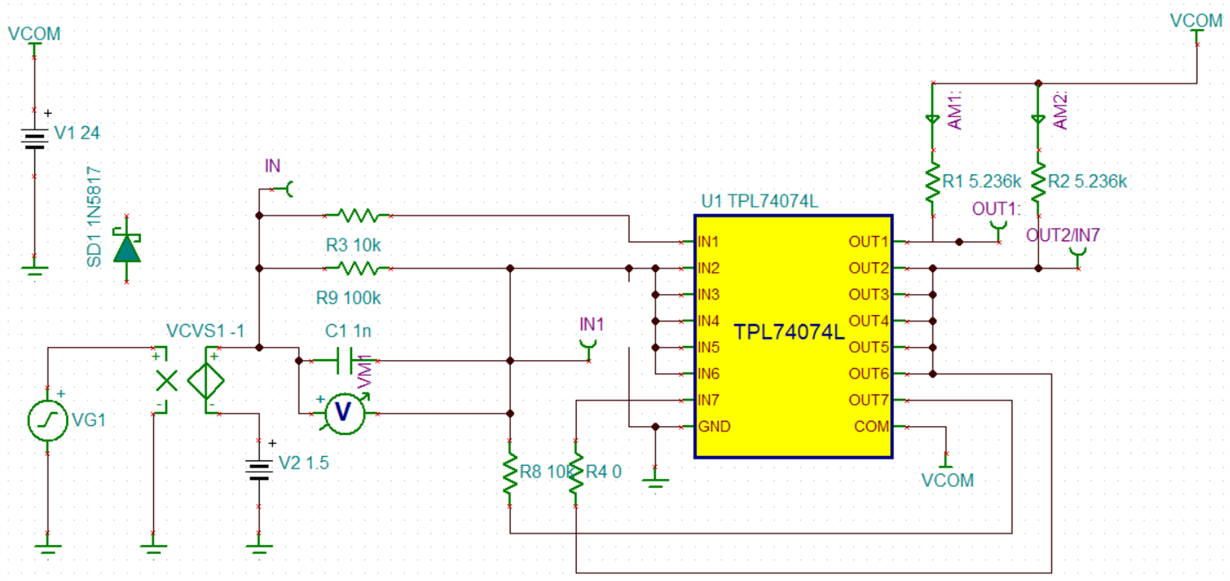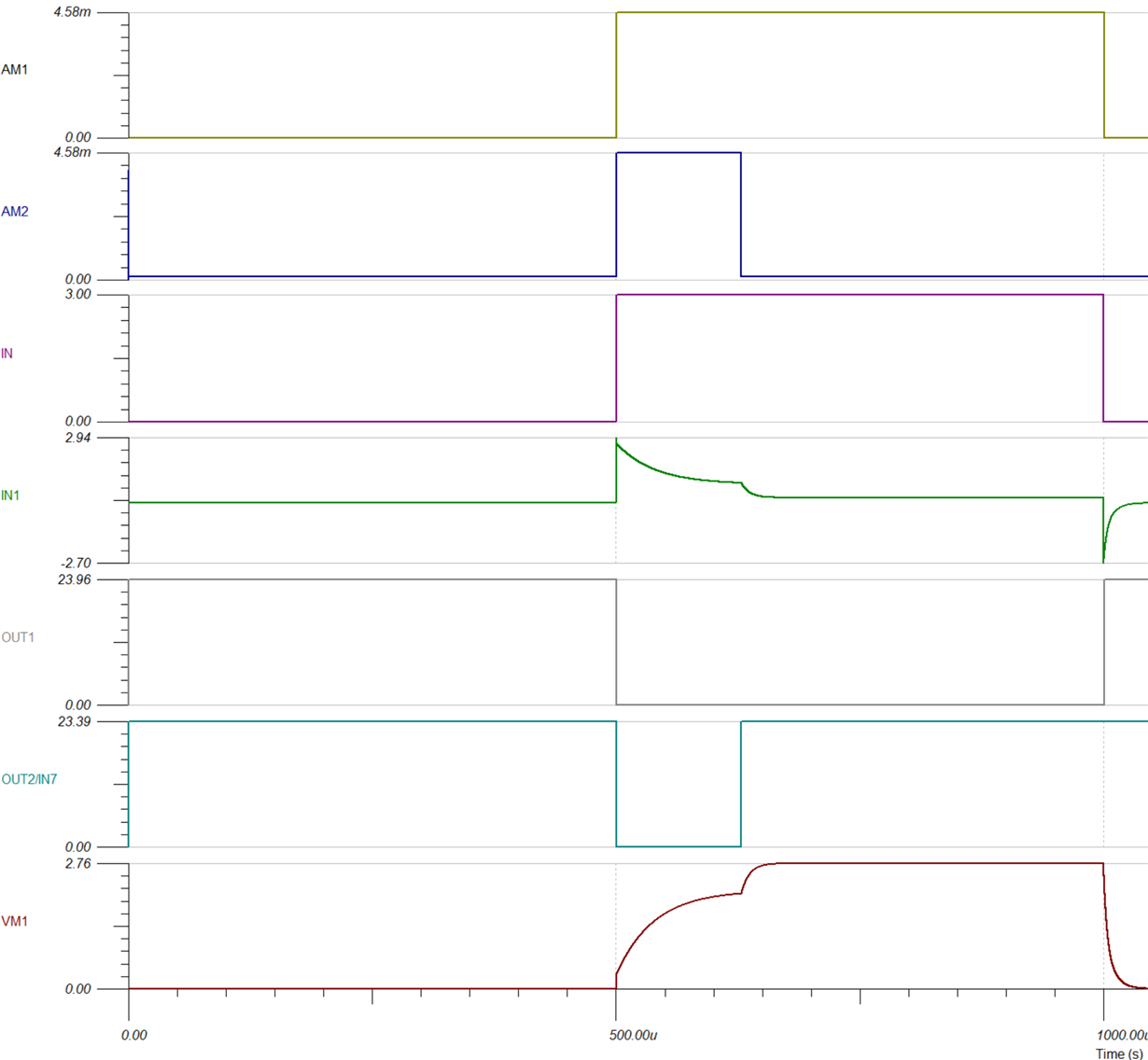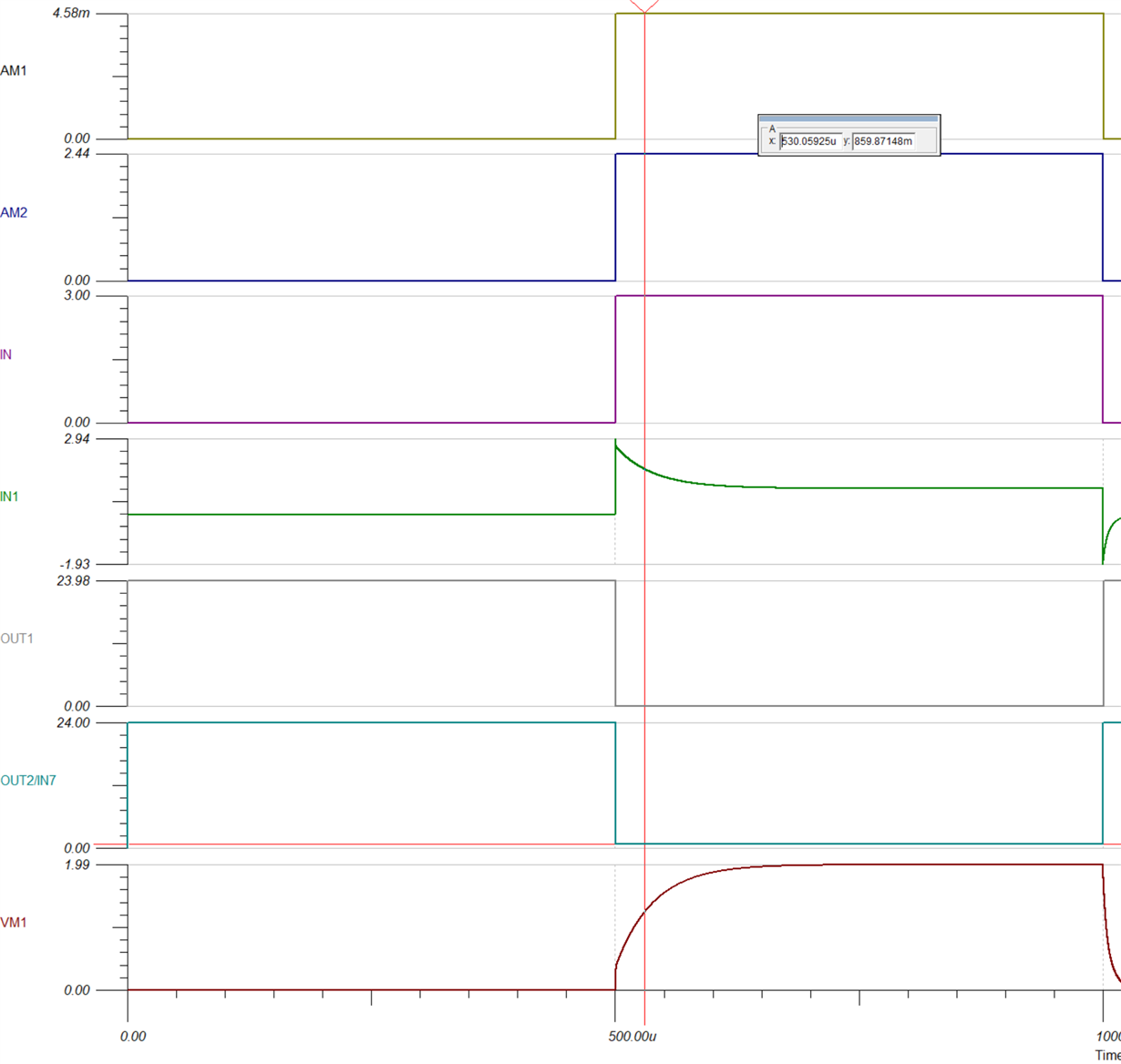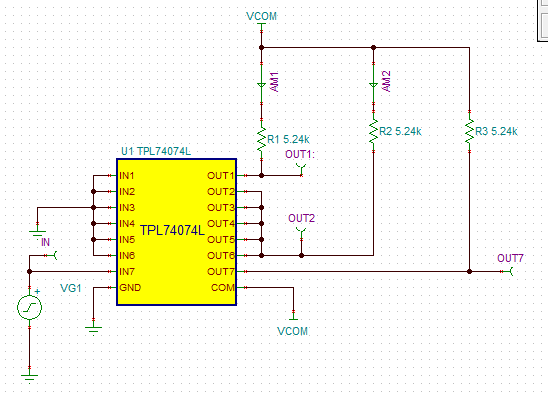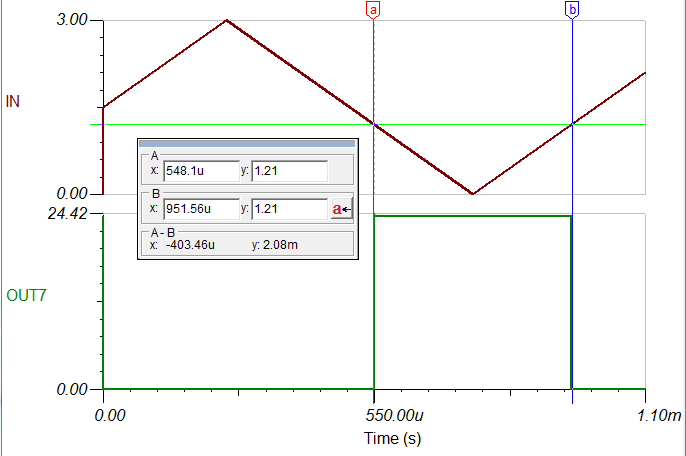Other Parts Discussed in Thread: TINA-TI,
Tool/software: TINA-TI or Spice Models
Hello,
I was interested in using the feature described in App Note SLLA352 (Designing Overcurrent Protection for the TPL7407L Peripheral Driver) section 3.3 on self-protecting the driver. After running simulations in TINA, I noticed that when the input switches off (from 3.0V to 0V), the voltage on the input pin for the self-protected circuit goes to -2.7V due to capacitor C1. This seems out of line with the absolute maximums given in your datasheet of -0.3V on the input pin. Won't the negative voltage damage the device?
The self-protection feature seems to fail in the TINA simulation above temperatures of ~35C. Is this due to the model itself? The overcurrent circuit will trip every time no matter how small the load, so I don't think this is how the physical device would function if I were running it at, say, 60C ambient.


